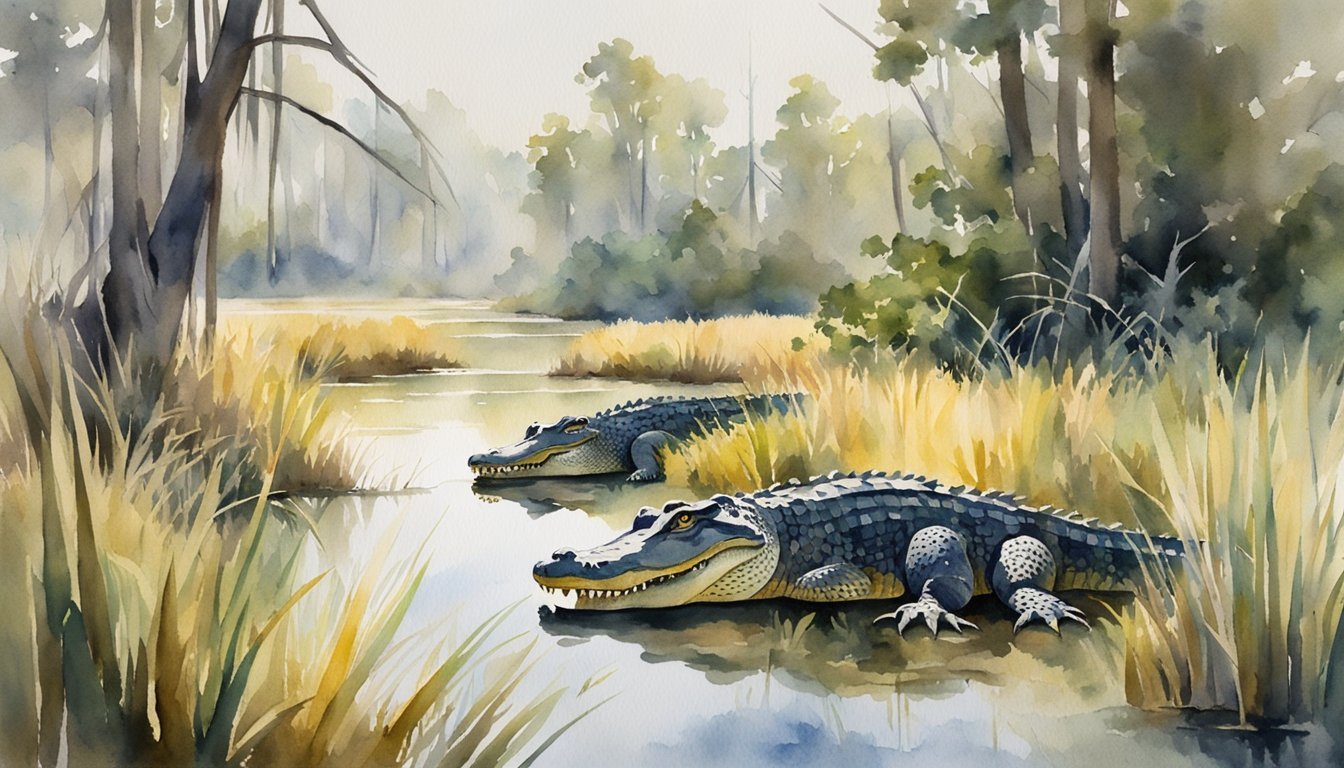Distribution and Habitat

American crocodiles play an integral role as apex predators within their environments, predominantly found across various water bodies ranging from freshwater to brackish and saltwater ecosystems. Their presence stretches from the southern tip of Florida into parts of the Caribbean and down through Central to South America, demonstrating their adaptability to different habitats.
Habitat Range of American Crocodiles
The American crocodile inhabits a variety of aquatic ecosystems. Specifically, they are often associated with coastal areas, mangrove swamps, and river estuaries. In the United States, these reptiles are primarily found in South Florida, especially in the mangrove-lined shores of the Everglades and the Florida Keys. Their range extends through a host of Caribbean islands, including Cuba, Jamaica, Hispaniola, and the Dominican Republic.
Crocodile Populations in South and Central America
In Central and South America, the range of the American crocodile is quite expansive. Populations have been identified along both the Pacific and Atlantic coasts of Mexico, cascading down through countries like Venezuela, Ecuador, and as far south as Peru. These reptiles are a key species to their ecosystems, frequently adjusting to different salinities which is a factor in their wide distribution.
Alligators vs. Crocodiles in North America
North America is home to both the American crocodile and the American alligator. Alligators are more widespread, inhabiting freshwater environments primarily in the southeastern United States, including the majority of Florida. Crocodiles, in contrast, are often found in the saltier waters of coastal and brackish areas of Southern Florida. Their habitats do not typically overlap due to their different salinity preferences, with alligators favoring freshwater and crocodiles being more tolerant of saltwater conditions.
Biology and Behavior

The American crocodile, known scientifically as Crocodylus acutus, showcases a unique blend of biological and behavioral traits. Scattered across North, Central, and South America, their presence is a testament to their adaptability, though they are classified as vulnerable. Monitoring their physical characteristics and dietary habits, reproduction and life cycle, as well as the threats they face and conservation efforts is crucial to understanding these remarkable reptiles.
Physical Characteristics and Diet
American crocodiles are distinguished by their long, narrow snout and powerful tail, adaptations that facilitate their semi-aquatic lifestyle. Adult males can reach lengths of up to 13 feet and weigh as much as 2,000 pounds. Diet is predominantly composed of fish, but can also include birds, small mammals, and crustaceans. These predators rely on external sources of heat to regulate their body temperature due to their ectothermic nature, often seen basking in the sun or floating in water with just their snout visible.
Reproduction and Life Cycle
American crocodiles are solitary when not breeding. Females are responsible for nest building, usually in sandy areas, and the temperature of the nest can determine the sex of the hatchlings. The incubation period lasts approximately 75 to 80 days. Hatchlings feast on insects and small fish and are quite vulnerable at birth. Maternal protection lasts only a short period; thereafter, juveniles must fend for themselves. Their life span can extend beyond 70 years, especially in captivity.
Threats and Conservation
Habitat destruction and human encroachment pose significant threats to crocodile populations. Despite their shy demeanor, crocodiles can be perceived as a threat when they come into contact with humans. Conservation status, according to external sources, lists American crocodiles as vulnerable, indicating the high risk of endangerment. Preservation of their habitats and public education are crucial for their continued survival. Conservation efforts focus on protecting nesting sites and regulating hunting to ensure these majestic creatures remain part of the Americas’ rich wildlife.

